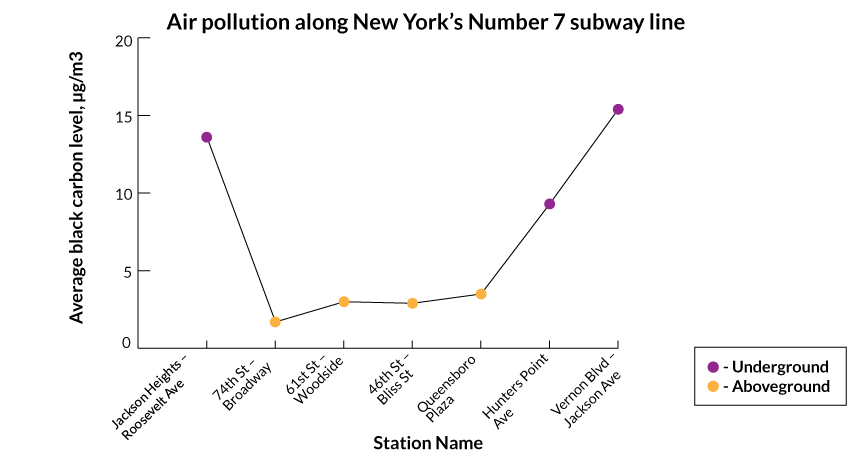Soot fouls subway stations — and maybe lungs
Subways’ soot may aggravate breathing problems in riders

Tiny particles of black carbon particles drift through the air at several New York City subway stations. Underground stations collect the highest concentrations of this soot, measured in micrograms per cubic meter of air.
M.J. RUZMYN VILCASSIM ET AL/ENVIRONMENTAL SCIENCE & TECHNOLOGY 2014







